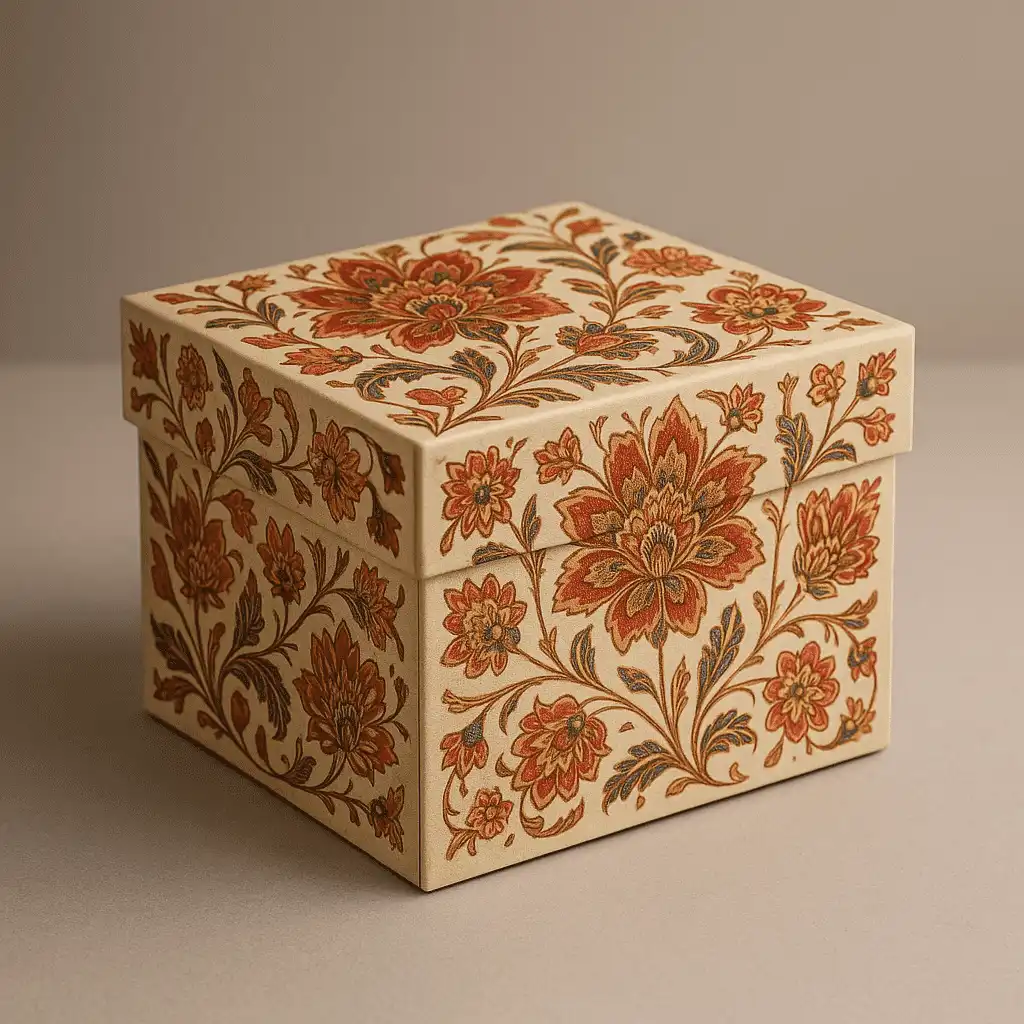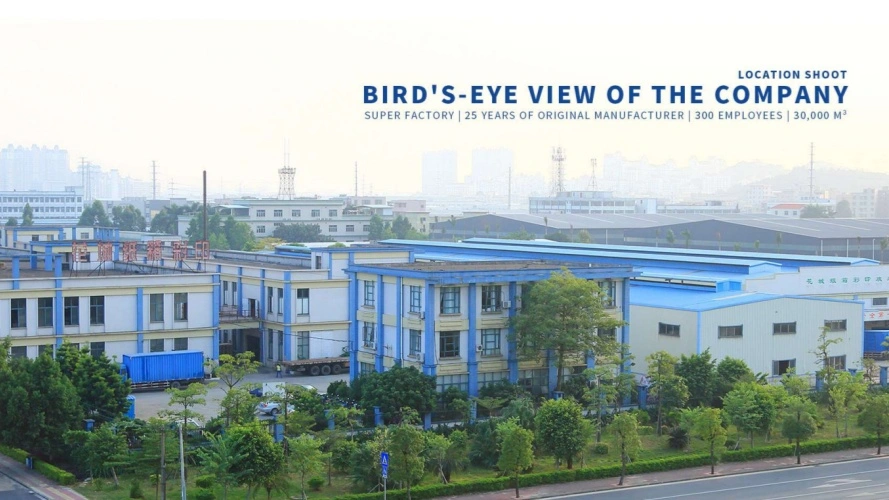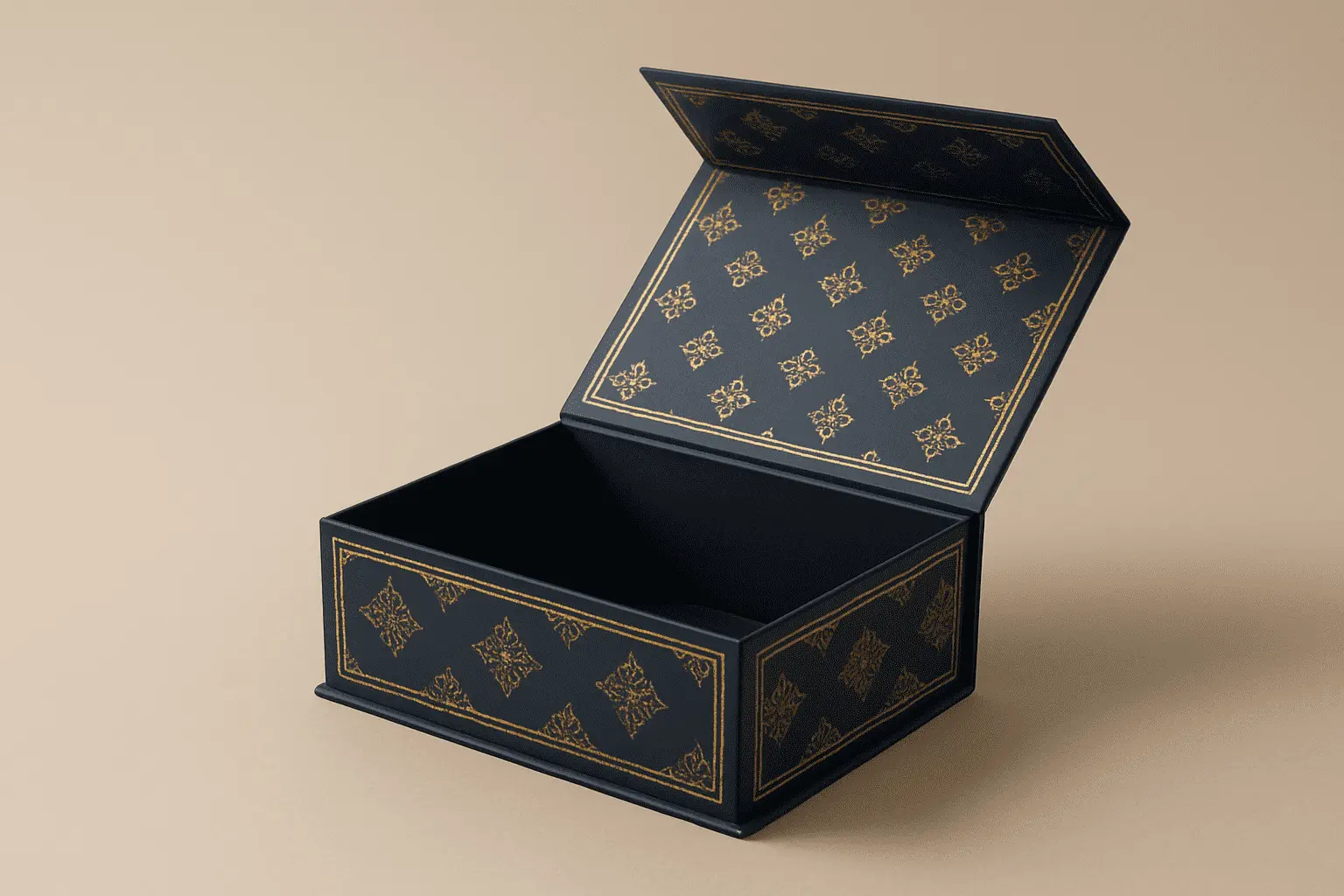cardboard gift Styles - The Standard Box Types Explained
In today's competitive marketplace, packaging serves as the silent ambassador of your brand, making the first impression that can determine consumer purchasing decisions. Understanding the various folding carton styles available is crucial for businesses seeking to optimize their product presentation, protection, and cost-effectiveness. This comprehensive guide explores the standard box types that dominate the packaging industry, examining their structural characteristics, applications, and manufacturing considerations.
The world of folding cartons encompasses a diverse range of structural designs, each engineered to meet specific product requirements and consumer needs. From simple straight tuck end boxes to complex multi-panel constructions, these cardboard gift boxes represent the backbone of modern packaging solutions. Whether you're launching a new product line, redesigning existing packaging, or exploring sustainable alternatives, understanding these fundamental carton styles will empower you to make informed decisions that enhance your brand's market presence while ensuring optimal product protection and consumer satisfaction.

Understanding Basic Folding Carton Construction
Fundamental Design Principles
The foundation of effective folding carton design lies in understanding the relationship between structural integrity, material efficiency, and manufacturing practicality. Modern cardboard gift boxes are engineered using precise mathematical calculations that determine panel dimensions, score line placement, and flap configurations to ensure optimal box performance during shipping, storage, and display. The structural design process begins with analyzing the product's physical characteristics, including weight, dimensions, fragility, and environmental sensitivity, which directly influence the choice of carton style and material specifications. Professional packaging engineers utilize computer-aided design software to create three-dimensional models that simulate real-world conditions, testing various stress points and load distributions before finalizing the design. This scientific approach ensures that each cardboard gift boxes configuration maximizes material utilization while providing adequate protection for the enclosed product. The integration of advanced manufacturing techniques, such as precision die-cutting and automated folding systems, enables the production of complex carton geometries that were previously impossible to achieve consistently at high volumes. The selection of appropriate board grades and caliper specifications plays a critical role in achieving the desired balance between cost-effectiveness and performance. Different product categories require varying levels of structural support, with heavier items necessitating higher-grade materials and reinforced construction techniques. Understanding these fundamental principles allows packaging professionals to optimize their carton designs for specific applications while maintaining cost efficiency and sustainability standards.
Material Considerations and Quality Standards
The choice of substrate material significantly impacts the performance characteristics and visual appeal of folding cartons. High-quality cardboard gift boxes utilize FSC-certified materials that meet stringent environmental standards while providing exceptional strength-to-weight ratios. The corrugated structure itself consists of multiple layers, including outer liners, inner liners, and fluting medium, each contributing to the overall structural integrity and protective capabilities of the finished package. Surface treatment options for cardboard gift boxes have expanded dramatically in recent years, incorporating advanced coating technologies that enhance printability, moisture resistance, and tactile properties. Cold foil stamping, UV coating, and specialized aqueous coatings can be applied to create premium visual effects while maintaining the structural integrity of the base material. These surface enhancements not only improve the aesthetic appeal but also provide functional benefits such as scuff resistance and enhanced barrier properties. Quality control measures throughout the manufacturing process ensure consistent performance across production runs, with rigorous testing protocols evaluating compression strength, edge crush strength, and print quality standards. The implementation of G7 color management systems and ISO-certified quality management processes guarantees that each cardboard gift boxes meets or exceeds industry specifications for both structural performance and visual appearance.
Manufacturing Process Excellence
The production of high-quality folding cartons requires sophisticated manufacturing equipment and precise process control to achieve consistent results across large production volumes. State-of-the-art printing presses, such as the KBA106-(9+1) UV printing machine and Heidelberg XL162-6L printing machine, enable the production of cardboard gift boxes with exceptional print quality and color consistency. These advanced systems incorporate real-time monitoring and adjustment capabilities that maintain optimal printing conditions throughout extended production runs. The die-cutting process represents a critical stage in carton manufacturing, requiring precision-engineered cutting dies that create clean, accurate edges while minimizing material waste. Modern die-cutting equipment utilizes computer-controlled positioning systems and automated quality inspection to ensure that each cardboard gift boxes meets dimensional tolerances and structural specifications. The integration of automated stripping and blanking systems further enhances production efficiency while maintaining consistent quality standards. Post-printing operations, including UV coating application, embossing, and specialized finishing techniques, are performed using dedicated equipment designed specifically for cardboard gift boxes production. These processes must be carefully coordinated to ensure proper adhesion and curing while avoiding damage to the printed graphics or structural integrity of the carton. The implementation of lean manufacturing principles and continuous improvement methodologies ensures optimal production efficiency and waste minimization throughout the manufacturing process.
Common Folding Carton Styles and Applications
Straight Tuck End Boxes
Straight Tuck End (STE) boxes represent one of the most versatile and widely used carton styles in the packaging industry, characterized by their simple construction and efficient material utilization. These cardboard gift boxes feature closure flaps that tuck into the same end of the box, creating a secure closure mechanism that requires no additional adhesives or mechanical fasteners. The straightforward design makes STE boxes ideal for automated packaging lines, where consistent closure performance and rapid processing speeds are essential for maintaining production efficiency. The structural simplicity of STE cardboard gift boxes makes them particularly suitable for products that require frequent access or temporary storage applications. The easy-open, easy-close functionality appeals to consumers who value convenience, while the streamlined design minimizes material usage and reduces packaging costs. These boxes are commonly employed for food products, pharmaceuticals, personal care items, and small electronics, where the combination of protection, accessibility, and cost-effectiveness is paramount. Manufacturing considerations for STE boxes include precise score line placement to ensure smooth folding operations and proper closure alignment. The design must account for material thickness variations and potential expansion or contraction due to environmental conditions. Quality cardboard gift boxes incorporate reinforcement features such as crash lock bottoms or reinforced closure flaps to enhance structural integrity while maintaining the simplicity that makes STE boxes so appealing to manufacturers and consumers alike.
Reverse Tuck End Configurations
Reverse Tuck End (RTE) boxes offer enhanced security and tamper-evidence features compared to their straight tuck counterparts, making them ideal for premium products and applications where package integrity is critical. In RTE cardboard gift boxes, the closure flaps tuck into opposite ends of the box, creating a more secure closure mechanism that is less likely to open accidentally during handling or transportation. This configuration provides superior protection for valuable or sensitive products while maintaining the convenience and cost-effectiveness associated with tuck-end closures. The enhanced security features of RTE cardboard gift boxes make them particularly suitable for pharmaceuticals, cosmetics, and luxury goods, where package tampering concerns and premium brand positioning require superior closure performance. The opposite-end tucking mechanism creates a visual indication of potential tampering, providing an additional layer of consumer confidence and brand protection. The structural design also distributes stress more evenly across the closure system, reducing the likelihood of premature failure under typical handling conditions. Design optimization for RTE boxes requires careful consideration of panel proportions and closure flap dimensions to ensure proper engagement and secure closure. The manufacturing process must maintain precise tolerances to guarantee consistent closure performance across production runs. Quality cardboard gift boxes utilize high-grade materials and precision converting techniques to achieve the dimensional accuracy required for reliable RTE closure operation, while incorporating design features that enhance both security and ease of use.
Auto-Lock Bottom Constructions
Auto-lock bottom boxes represent a significant advancement in carton design technology, featuring sophisticated mechanical interlocking systems that create secure, adhesive-free bottom closures. These cardboard gift boxes utilize precisely engineered tab-and-slot configurations that automatically engage during the box erection process, creating strong, reliable bottom seals without requiring additional materials or processing steps. The self-locking mechanism significantly reduces packaging line setup time and eliminates the need for tape, glue, or staples in bottom closure applications. The structural advantages of auto-lock bottom cardboard gift boxes include superior load distribution and enhanced resistance to bottom failure under heavy loads or impact conditions. The interlocking mechanism creates multiple load paths that distribute stress across the entire bottom panel assembly, providing exceptional strength and durability. This makes auto-lock bottom boxes particularly suitable for heavy products, fragile items that require stable support, and applications where bottom failure could result in product damage or safety concerns. Manufacturing auto-lock bottom boxes requires precision die-cutting and sophisticated quality control measures to ensure proper tab and slot engagement. The complex geometry of the interlocking mechanism demands tight dimensional tolerances and consistent material properties throughout the production process. High-quality cardboard gift boxes with auto-lock bottom construction utilize advanced converting equipment and rigorous inspection procedures to guarantee reliable performance across diverse product applications and handling conditions.
Specialized Applications and Custom Solutions
Display and Retail-Ready Packaging
The evolution of retail environments has created increasing demand for packaging solutions that serve dual purposes as both protective shipping containers and attractive point-of-sale displays. Display-ready cardboard gift boxes incorporate sophisticated design elements that enable rapid shelf deployment while maintaining the structural integrity required for distribution and handling. These multi-functional packages often feature perforated tear-strips, easy-open dispensing mechanisms, and graphics optimized for both shipping identification and consumer appeal. Retail-ready packaging represents a significant opportunity for brands to differentiate their products at the point of sale while reducing retailer labor costs associated with unpacking and shelf stocking. Properly designed cardboard gift boxes for retail applications incorporate features such as built-in product separation, portion control mechanisms, and inventory management systems that enhance the shopping experience while improving operational efficiency. The integration of QR codes, RFID tags, and other smart packaging technologies further extends the functionality of these specialized carton designs. The development of effective display packaging requires close collaboration between packaging engineers, brand managers, and retail partners to ensure optimal performance across all aspects of the supply chain. Cardboard gift boxes designed for retail display applications must balance structural requirements, visual impact, cost constraints, and operational considerations to create packaging solutions that deliver value to all stakeholders. This comprehensive approach to package development ensures successful implementation and long-term market acceptance of innovative display packaging concepts.
E-commerce and Shipping Optimizations
The explosive growth of e-commerce has fundamentally transformed packaging requirements, creating demand for cardboard gift boxes that excel in direct-to-consumer shipping applications. These specialized boxes must provide exceptional protection during automated sorting, long-distance transportation, and final delivery while maintaining cost-effectiveness and sustainability standards. The unique challenges of e-commerce packaging include variable product dimensions, mixed product shipments, and the need for enhanced customer unboxing experiences. Modern e-commerce cardboard gift boxes incorporate advanced structural features such as internal cushioning systems, multi-depth scoring for size optimization, and tamper-evident closure mechanisms. The design process must account for the wide variety of shipping methods and handling conditions encountered in e-commerce distribution networks, from automated warehouse systems to residential delivery scenarios. This comprehensive approach to package design ensures optimal product protection while minimizing shipping costs and environmental impact. The integration of smart packaging technologies and customer engagement features has become increasingly important in e-commerce applications. Cardboard gift boxes designed for online retail often incorporate QR codes for easy returns processing, sustainability messaging to support corporate responsibility initiatives, and premium unboxing experiences that enhance brand perception. These value-added features transform functional shipping containers into powerful marketing tools that extend brand engagement beyond the initial purchase transaction.
Sustainable and Eco-Friendly Innovations
Environmental sustainability has become a primary driver of innovation in folding carton design, with manufacturers developing cardboard gift boxes that minimize environmental impact while maintaining performance standards. The adoption of FSC-certified materials, water-based inks, and recyclable coatings demonstrates the industry's commitment to environmental stewardship. These sustainable materials and processes enable the production of high-quality packaging solutions that meet both performance requirements and environmental responsibility standards. The circular economy principles have influenced the development of cardboard gift boxes designed for multiple use cycles, with features that enhance durability and facilitate reuse applications. Innovative design approaches include modular construction systems, reinforced high-wear areas, and easy-clean surfaces that extend package life while maintaining hygiene standards. These design innovations support corporate sustainability initiatives while providing cost benefits through reduced packaging material consumption. Life cycle assessment methodologies are increasingly being integrated into the package development process, enabling manufacturers to quantify the environmental impact of different cardboard gift boxes designs and manufacturing approaches. This data-driven approach to sustainability ensures that environmental improvements are based on scientific analysis rather than perception, leading to more effective strategies for reducing the overall environmental footprint of packaging operations.
Conclusion
The comprehensive exploration of folding carton styles reveals the sophisticated engineering and design considerations that underpin modern packaging solutions. From basic tuck-end constructions to specialized display and e-commerce applications, cardboard gift boxes continue to evolve in response to changing market demands and technological capabilities. Understanding these standard box types empowers businesses to make informed packaging decisions that optimize product protection, cost-effectiveness, and brand presentation while supporting sustainability objectives and operational efficiency requirements.
Ready to Transform Your Packaging Strategy?
With over 20 years of experience and a dedicated team of 300+ skilled employees operating from our 35,000 m² manufacturing facility, Guangzhou Fetching Color Printing & Packaging Ltd. has earned the trust of over 1,000 loyal customers worldwide. Our state-of-the-art equipment, including KBA106-(9+1) UV printing machines and advanced corrugated board production lines, ensures exceptional quality and consistency in every project.
Whether you need custom cardboard gift boxes, innovative display solutions, or comprehensive packaging development services, our team of experienced packaging engineers is ready to bring your vision to life. We offer free 3D mock-ups, competitive MOQs starting at 1,000 pieces, and rapid 15-20 day delivery times to meet your project deadlines.
Contact us today to discuss your packaging requirements: public@fetchingprinting.com
Let's collaborate to create packaging solutions that protect your products, enhance your brand, and drive your business success!
References
1. Anderson, M.K., & Thompson, R.L. (2022). Structural Engineering Principles in Corrugated Packaging Design. Journal of Packaging Technology and Research, 36(4), 245-262.
2. Chen, H.W., Rodriguez, S.A., & Kim, J.H. (2023). Sustainable Materials and Manufacturing Processes in Modern Folding Carton Production. International Packaging Science Review, 41(2), 78-95.
3. Williams, D.R., Foster, L.M., & Zhang, Q. (2021). E-commerce Packaging Optimization: Structural Design Considerations for Direct-to-Consumer Shipping. Packaging Engineering Quarterly, 29(3), 112-128.
4. Johnson, P.E., Davis, K.N., & Liu, Y. (2023). Retail-Ready Packaging Systems: Design Methodologies and Performance Standards. Advanced Packaging Technologies, 18(1), 34-51.

Based on your location and order quantity, you will have the opportunity to receive a limited time free shipping promotion!

Corporate Purpose
